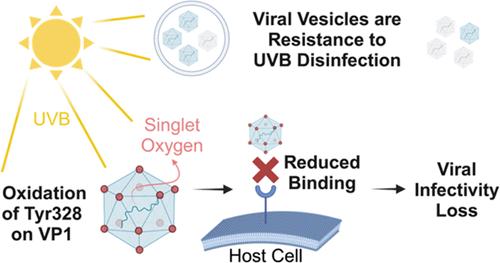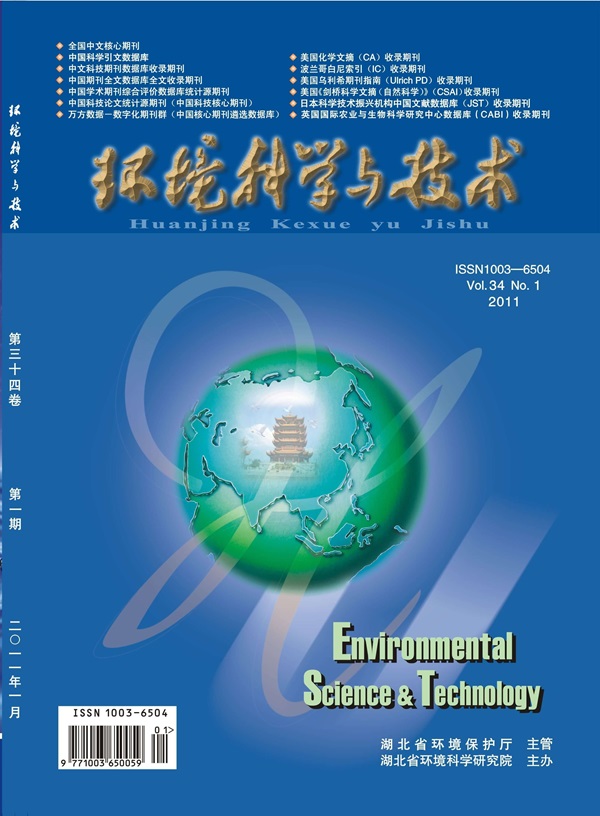Kinetics and Mechanisms of Solar UVB Disinfection of Vesicle-Cloaked Murine Norovirus Clusters and Free Noroviruses
IF 10.8
1区 环境科学与生态学
Q1 ENGINEERING, ENVIRONMENTAL
引用次数: 0
Abstract
Human norovirus, a major global cause of gastroenteritis, forms vesicle-cloaked virus clusters (known as viral vesicles), showing increased infectivity and persistence in aquatic environments. We investigated UVB disinfection, a key mechanism of solar disinfection commonly employed in developing countries, targeting murine norovirus vesicles and free murine noroviruses as surrogates for human noroviruses. At low viral concentrations of 109 gene copies per liter, viral infectivity loss as quantified by the integrated cell culture-reverse transcription-quantitative polymerase chain reaction (ICC-RT-qPCR) indicated that vesicles were 1.51 to 1.73 times more resistant to disinfection compared to free viruses. Virus inactivation was primarily due to protein damage as quantified by bicinchoninic acid and Western blot assays, and the damage of virus binding to host cells as quantified by RT-qPCR. Molecular simulations predicted that the oxidation of a tyrosine residue in the viral protein 1 prohibited binding. UVB irradiation of viral/vesicle proteins resulted in 1O2 formation as quantified by time-resolved phosphorescence, and for the first time, endogenous 1O2 was confirmed to contribute to virus inactivation by UVB. Our study recognizes the limitation of UVB disinfection of viral vesicles particularly in solar wastewater treatment and advocates for enhanced disinfection strategies to protect public health.

求助全文
约1分钟内获得全文
求助全文
来源期刊

环境科学与技术
环境科学-工程:环境
CiteScore
17.50
自引率
9.60%
发文量
12359
审稿时长
2.8 months
期刊介绍:
Environmental Science & Technology (ES&T) is a co-sponsored academic and technical magazine by the Hubei Provincial Environmental Protection Bureau and the Hubei Provincial Academy of Environmental Sciences.
Environmental Science & Technology (ES&T) holds the status of Chinese core journals, scientific papers source journals of China, Chinese Science Citation Database source journals, and Chinese Academic Journal Comprehensive Evaluation Database source journals. This publication focuses on the academic field of environmental protection, featuring articles related to environmental protection and technical advancements.
 求助内容:
求助内容: 应助结果提醒方式:
应助结果提醒方式:


